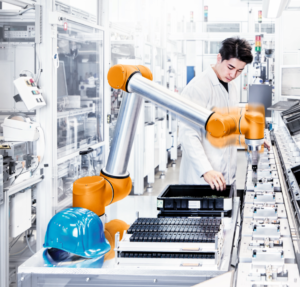 As the use of autonomous mobile robots (AMRs) increases, there is a growing need for innovative solutions that help improve collaborative robot safety.
As the use of autonomous mobile robots (AMRs) increases, there is a growing need for innovative solutions that help improve collaborative robot safety.
No longer are sensors used solely for stopping a machine in the presence of a person or an object.
Many safety standards have been developed to help this rise in AMRs, but new technologies for industrial collaborative and mobile robots still require ongoing work to define safety protocols.
According to the Robotics Industries Association, the use of robots in the consumer goods and packaging industries has increased by nearly 48 percent in recent years. These robots come in many forms, but collaborative robots or “cobots” are one of these types of robots that are growing in number. They are intended to share work spaces with humans and are built to be a much safer partner than an industrial robot.
However, a common misconception is that collaborative robots are safe right out of the box, but this may not always be the case. Once laws, regulations, and safety standards are in place, there are six steps to a safe machine or robot system:
- Risk Assessment
- Safe Design
- Engineering Controls
- Administrative Measures
- Overall Validation
- Placing on the Market
 Ensure the safety of your machines and employees by watching SICK’s webinar on how you can accomplish the six steps to collaborative robot safety.
Ensure the safety of your machines and employees by watching SICK’s webinar on how you can accomplish the six steps to collaborative robot safety.





